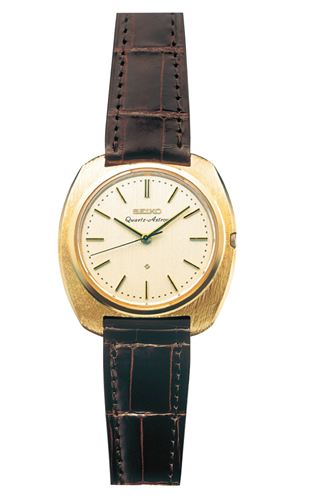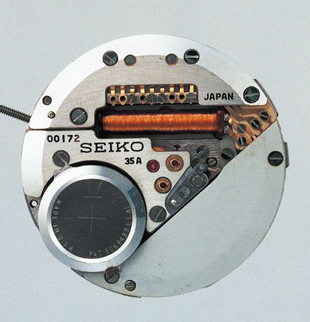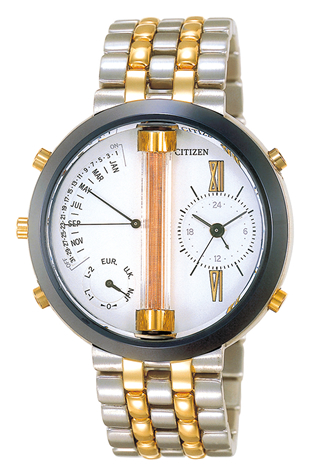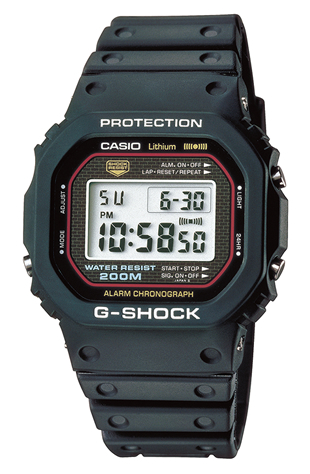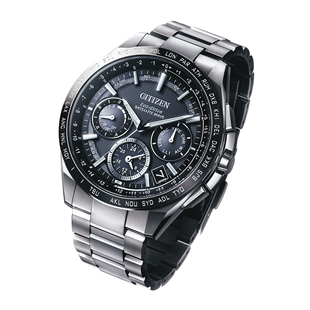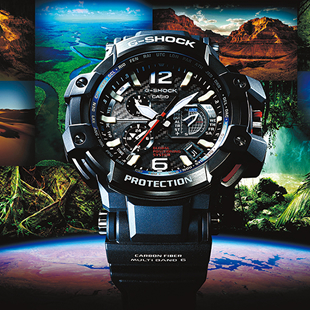niponica is a web magazine that introduces modern Japan to people all over the world.
2015 No.17
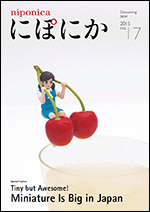
To read the e-book you need to have JavaScript enabled in your browser and a free Flash Player plug-in from Adobe Systems Inc. installed.
Miniature Is Big in Japan

Timepiece Manufacturing
The Long Road to the Japanese Wristwatches of Today
Wristwatches occupy a precision world since they are only a few centimeters in diameter and it is impossible to make them without advanced technology. This is the kind of sector Japanese manufacturing has excelled in for a long time. On these pages we examine the history of wristwatch manufacturing in Japan, showing the special care taken at every step of the way to ensure optimal performance.
Photos: Seiko Watch Corporation, Citizen Watch Co., Ltd., Casio Computer Co., Ltd., The Seiko Museum, Japan Clock & Watch Association, and PIXTA

Seiko Watch Corporation’s Astron watch uses GPS signals to automatically recognize the time zone you are in, anywhere on Earth. You can trust the accuracy, even on the top of Mount Everest or in Antarctica.
The early days of clock-making in Japan
Clock-making in Japan was kick-started around the middle of the 1500s when a Portuguese missionary arrived with a mechanical clock. But not too long after that, the Edo Shogunate closed the country off to the outside world. So then Japanese mechanical clocks started to evolve in a distinctive way, as Wa-dokei that told time in the traditional Japanese style.
The most interesting feature of Wa-dokei was that they used an uneven time schedule. Today, we divide a day into 24 hours of uniform duration, whereas in old Japan they divided a day into daylight time and night time. Day and night had the same number of “hours.” The Wa-dokei system was faithful to the natural rhythms of life and remained a standard for daily living, whereas in the West hours of equal duration became the norm when mechanical clocks gained favor.
Day and night have different lengths, depending on the season, so, for example, the old Japanese system assigned longer “hours” for daytime in summer and shorter ones in winter. The challenge, of course, was how to get a mechanized clock to tell time with such a complicated system. After plenty of trial and error, clockmakers actually came up with multiple systems. One system had a double foliot balance mechanism that moved like a pendulum— it switched automatically twice a day, once for the day, once for the night. Another system changed the intervals between numbers on the clock face to display shorter or longer “hours.”
The old clocks came in different designs. The yagura-dokei, named after a yagura turret, had its mechanical parts mounted on a stand, and the stand was shaped like a belfry or a fire watchtower. The shaku-dokei pillar clock with hour scale used weights that drove the mechanism and served as the clock hands. The inro-dokei was a portable timepiece on an inro carrying case that was stylishly decorated. Wa-dokei were fine pieces of craftsmanship, both technically and artistically.
In 1873, a while after opening up again to the outside world, Japan adopted the Western system of uniform time intervals. This ended the role of traditional clocks. But what did not end was the zeal that timepiece makers continued to exhibit in their designs, techniques and originality. That lives on today in Japan’s watchmaking industry.
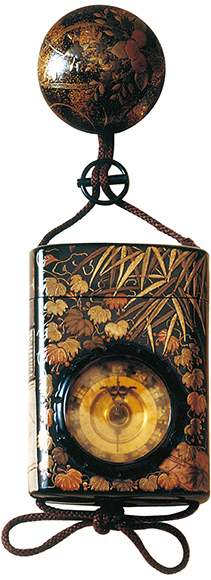
Inro-dokei timepiece incorporated in an inro (a small carrying case for personal items like medicine). The clock face numbers were adjusted to compensate for the changing lengths of daytime and nighttime as the seasons changed. The ornate decoration uses tortoise shell and makie (gold or silver powder on lacquer).
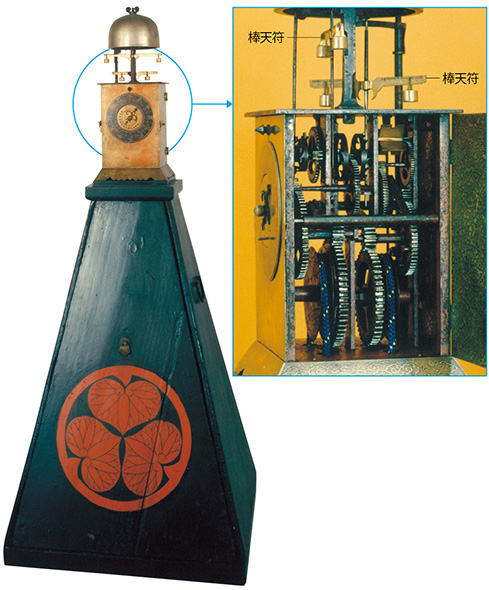
Left: Yagura-dokei timepieces were mounted on a stand resembling a yagura turret. The bell at the top rang out the time.
Right: Wa-dokei clocks had an intricate mechanical configuration inside. This type had a double foliot balance mechanism that moved automatically twice a day (once for day, once for night), telling the time in the traditional style.
Delivering accurate time for all: The quartz wristwatch
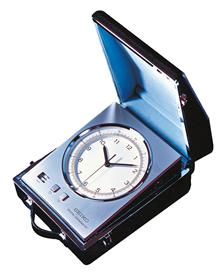
Quartz timepiece used as a master clock for long-distance races during the Tokyo Olympics. Released by Seiko in 1963, it offered lower battery consumption and came in a compact size that made it highly portable. It became an official timepiece for competitive events throughout the world.
Japan’s timepiece industry entered its glory days in 1969, when the world’s first-ever quartz wristwatches hit the stores.
Quartz timepieces governed by a crystal oscillator were first developed in 1927 in the United States, but the invention did not quickly lead to a commercially viable product. The biggest obstacle was size: Japan’s first commercial quartz timepiece was 2 meters tall, about the same as a wardrobe. The next development was a quartz timepiece for ships. Its footprint was 45 x 45 cm, and it weighed 30 kg. It had become smaller, but it was still impossible to carry about. But then in 1963, the year before the Tokyo Olympics, a quartz timepiece 20 cm tall and 16 cm wide was released for timing athletic events. It weighed 3 kg, which in those days demonstrated a remarkable advance in the direction of smaller and lighter.
This evolution culminated in the quartz wristwatch. From a clock as tall as a wardrobe to a watch on a wrist—engineers had worked very hard to make a reliable, shock-resistant, accurate, wearable timepiece.
Initially, a quartz wristwatch small enough to wear on the wrist cost about the same as a family car. But before many years had passed mass production became the norm, rapidly making owning a quartz wristwatch a possibility for just about everyone. Precision and mass production worked together to change the world’s timepiece industry radically. After several centuries of clock-making, the arrival of affordable quartz wristwatches was a transformative event.

The 1964 Tokyo Olympic Games made use of a total of 1,278 time devices of 36 types, including stopwatches and large time display panels. The photo was taken during the marathon.

Assembly line for wristwatches at a Seiko factory around the year 1970. The number of timepieces produced in Japan grew by leaps and bounds in the 1960s and 70s, thanks to strict quality controls and efficient mass production launched by the industry in the second half of the 1950s.
3
3. The world’s first wristwatch capable of maintaining precise time through the use of signals from multiple transmitting stations. It was made in 1993 by Citizen Watch Co., Ltd. and received standard time and frequency signals from Japan, the U.K. and Germany, for precision accuracy. The antenna is mounted in the middle of the watch face.
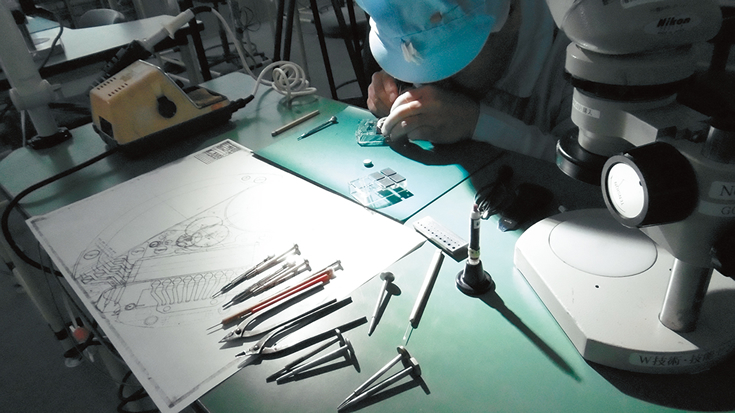
The first-generation Astron revolutionized the wristwatch industry. It reflected the wish of the Japanese for accurate timekeeping, a wish that lives on in today’s advanced wristwatches.
Great functions and quality in a small watch
The technology behind wristwatches continues to evolve, and Japan is one of the major players in these advances. Japanese engineers are keen to keep adding value, whether through greater shock resistance, or features to measure things like altitude and barometric pressure, or connectivity with smartphones. Features like utilizing light energy or ordinary arm movement to charge the watch, or ever-greater accuracy delivered with automatic electromagnetic wave-based synchronization, are now found in cheaper models, too. Japanese companies have recently moved ahead of the competition with synchronization using GPS signals, for precision no matter what time zone you happen to be in at the moment.
A product tells the story of the maker’s mindset and aspirations. Perhaps the desire for accuracy so precise that it uses satellites indicates the earnest nature of the Japanese, who are known for their respect for punctuality and precision.
Reliable, practically unbreakable, functionally advanced, high-quality, priced for everyone, precise, dependable, so punctual and proper... these are the qualities of Japanese timepieces. The next time you have the opportunity, you may want to try out a small watch crammed with all that Japanese technology and dedication.
Citizen’s newest GPS model, the Attesa F900, incorporates advanced new technology for charging from any light source. This model can even transform low indoor lighting into enough energy to keep the watch charged, eliminating the need to change the battery. Better for the environment, too.



